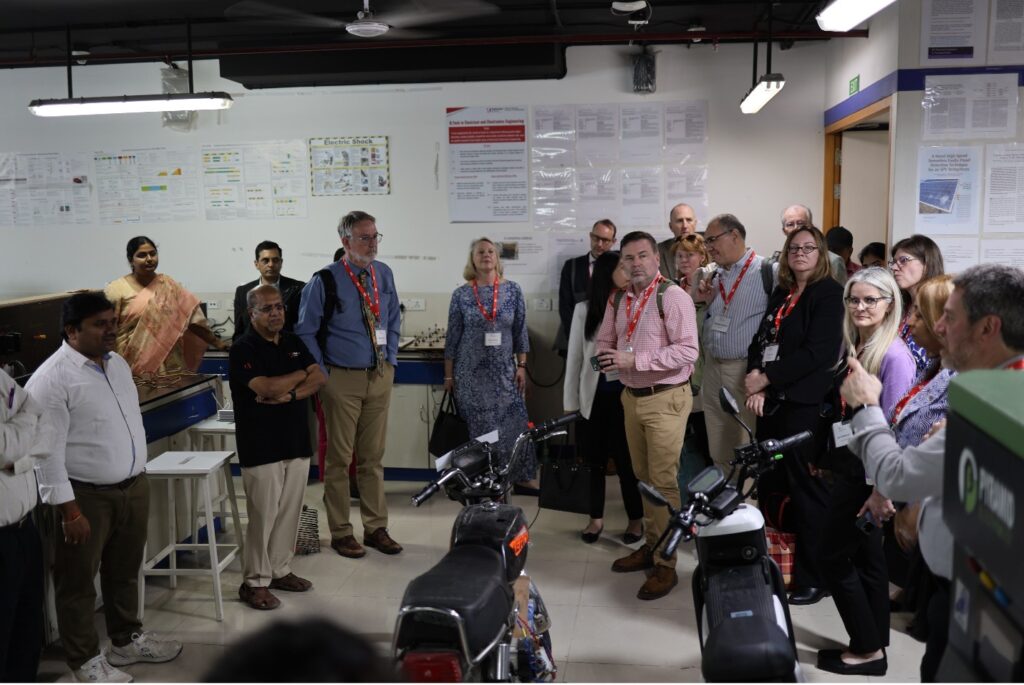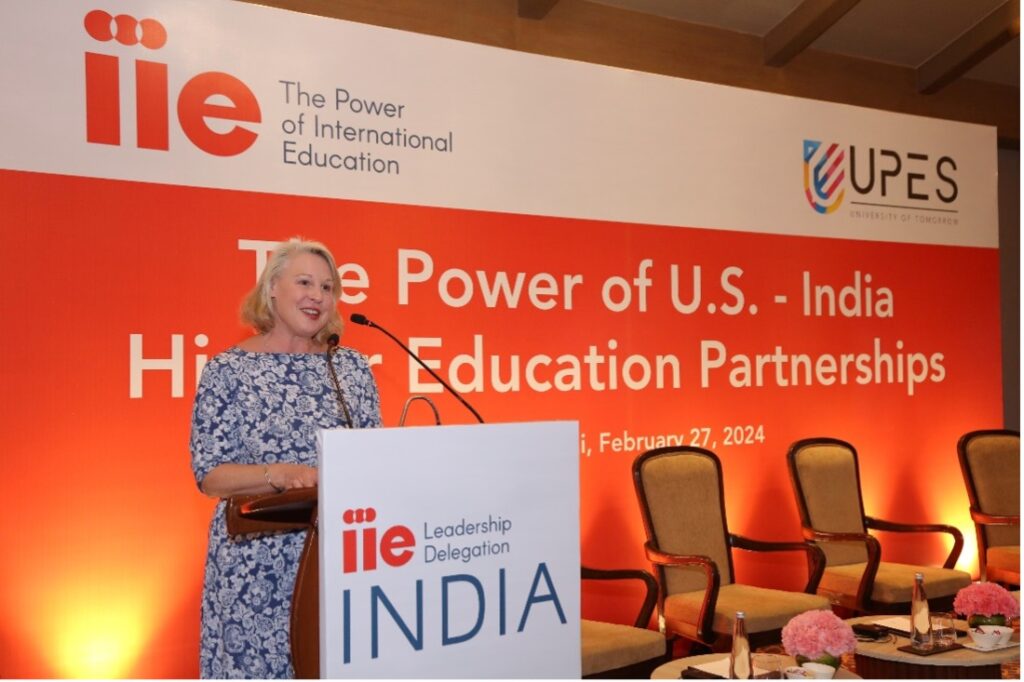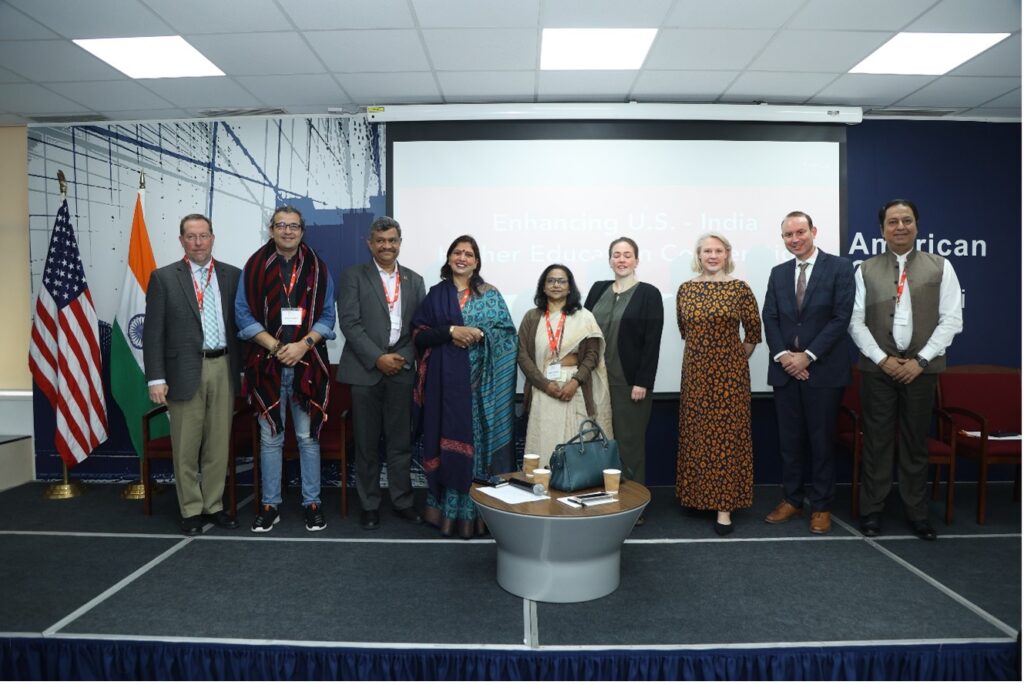Four Reasons Why U.S. and Indian Higher Education Institutions Should Partner
I was privileged to help lead IIE’s delegation of U.S. university leaders to India, facilitating discussions with representatives from more than 60 Indian institutions; visiting key academic hubs in Delhi, Hyderabad, and Mumbai; and exploring opportunities for student and scholar exchange, collaborative research, and joint and dual degree programs.
In recent years, India has emerged as a beacon of opportunity in various sectors, particularly in education. With a rapidly expanding population and a burgeoning educational landscape, the country offers immense potential for institutional engagement, particularly between India and the United States. The scope of these opportunities, the evolving dynamics of Indian institutions and regulations, and the avenues available for fostering closer ties between our two nations pave the way for transformative partnerships and cross-cultural exchanges.
The delegation has ended, but educational opportunities in India continue to bloom. Reflecting on the conversations, here are four reasons why it is an auspicious time for U.S-India institutional engagement.
1. Student enrollment is outpacing capacity in India.
India’s education sector is experiencing unprecedented growth, with over 40 million students enrolled in more than 1,200 universities and 50,000 colleges and institutions. There has been a significant rise in the number of women pursuing higher education, particularly in STEM fields. Despite all this progress, there remains untapped potential, especially concerning international collaboration and exchange.
In the next 25 years, more than 50 million additional students will join India’s higher education ecosystem. With millions of students entering the education system each year, there is a pressing need to expand educational infrastructure and enhance access to quality education. Initiatives like the National Education Policy 2020 (NEP) underscore the Indian government’s commitment to educational expansion and flexibility.
The need for more institutional engagement with India has never been clearer. As the country undergoes rapid demographic and economic changes, there is a window of opportunity for international partners to collaborate and contribute to India’s educational development.
2. India is removing obstacles to attract international business.
Recent technological advancements and policy reforms such as the NEP 2020 have enabled Indian institutions to advance rapidly. The encourages international universities to establish branch campuses and joint degree programs. To help facilitate this, the state of Gujarat created Gujarat International Finance Tech City (GIFT), where international institutions may conduct business with Indian entities in a deregulated environment. These all are signals of a shift towards greater internationalization; however, challenges remain, including the need for faculty training and institutional capacity building. Despite these challenges, Indian institutions are eager to embrace internationalization and enhance their global footprint. Initiatives like the Study in India program aim to attract international students, while platforms like the Academic Bank of Credits (ABC) facilitate seamless credit transfer and academic mobility within India.

3. Programs like the iCET, Quad Fellowship, and Fulbright Program are already jumpstarting engagement.
The U.S. Initiative on Critical and Emerging Technologies (iCET), the Quad Fellowship, and the Fulbright Program play pivotal roles in fostering cross-cultural exchange and addressing global challenges. The newest, iCET, announced by President Biden and President Modi in 2022, facilitates the supervision of 400 to 500 doctoral students from both nations by faculty members, enabling them to delve into collaborative projects addressing the significant challenges facing our planet.
The Quad Fellowship was launched in 2021 as an initiative of the Quad country governments (India, Australia, Japan, and the U.S.) to sponsor exceptional master’s and doctoral students in STEM from the Quad countries. The program is administered by IIE and the application for the second cohort is now open.
The Fulbright Program with its array of study and research awards, serves as a catalyst for academic collaboration between India and the U.S. as well as more than 160 other countries. Through initiatives like the U.S. Student, Foreign Student, U.S. Scholar, and Visiting Scholar Programs, students and scholars from both countries can engage in cross-cultural exchange and contribute to mutual understanding. In fact, India has both the largest U.S. and Visiting Scholar Programs worldwide.

4. The IIE India Spotlight Series continues.
The time is ripe for institutional engagement with India. With its burgeoning education sector, dynamic institutions, and supportive regulatory framework, India offers a fertile ground for collaboration and innovation. By leveraging current initiatives like the iCET, Quad Fellowship and the Fulbright Program, and by creating new partnerships, U.S. and Indian institutions can forge meaningful, mutually beneficial partnerships and contribute to the advancement of education on a global scale. At IIE, we stand ready to support institutions, businesses, foundations, and governments through our Center for International Partnerships—which powered the IIE Leadership Delegation to India—and our global, 10,000-member IIENetwork. Stay tuned for our bi-national online seminar about U.S.-India Higher Education Collaboration and other engagement activities. As India continues its path of growth and development, the opportunities for closer engagement and exchange between the U.S. and India are limitless.
